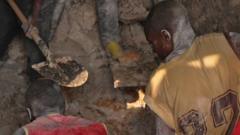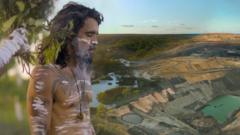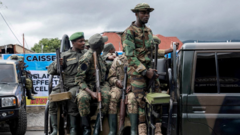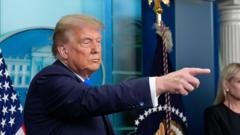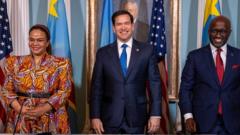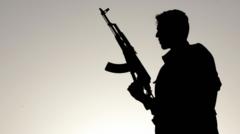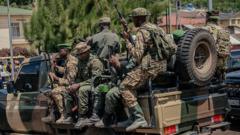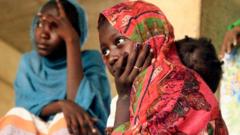Accessed by the BBC, the mine offers a glimpse into the lives of over 10,000 miners who work tirelessly for meager wages while hoping for a prolonged period of peace amid ongoing violence and instability in the region.
Inside the Rubaya Mine: A Crucial Source of Coltan in Eastern Congo
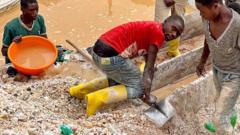
Inside the Rubaya Mine: A Crucial Source of Coltan in Eastern Congo
The Rubaya mine, controlled by M23 rebels, exposes the complex intersection of mineral wealth and conflict in the Democratic Republic of Congo.
In the verdant Masisi Hills of North Kivu province, the Rubaya mine has become a focal point for both economic opportunity and armed conflict. Recently, the BBC gained rare access to this vital mining site, revealing the precarious existence of thousands who dig for coltan, a mineral essential for mobile phone production.
Patrice Musafiri, the mine supervisor appointed by the M23 rebel group that seized control in April 2022, reported that around 10,000 miners labor daily under challenging conditions, navigating through heated tunnels filled with harmful gases. Despite the dangers, many men, like miner Peter Osiasi, express gratitude for the job, as it has provided them with the means to support families.
Nestled about 60 kilometers from Goma, the Rubaya mine contains an estimated 15% of the global coltan supply. This vast potential wealth has attracted international investors' attention, particularly amid a fragile ceasefire agreement between the DR Congo and Rwanda intended to settle decades of turmoil in the region.
The M23 rebels, predominantly Tutsi, continue to exert considerable control in eastern Congo, including the key cities of Goma and Bukavu. Though the rebels have been accused of receiving support from Rwanda, both countries deny these allegations, further complicating the peace process.
Current negotiations focus on potential investments in the mining sector, with the Congolese government viewing these as opportunities for economic growth. However, local miners highlight that wages remain low, and there is minimal infrastructure to support their work and community needs.
Musafiri emphasized that any foreign investment should prioritize the development of local communities, suggesting that improvements in pay, job opportunities, and essential services are necessary. As discussions of peace continue, miners at Rubaya, like Osiasi, express a significant desire for stability, urging their leaders to maintain the hard-fought peace, which they hope will offer a brighter future amid the ongoing conflict.
Patrice Musafiri, the mine supervisor appointed by the M23 rebel group that seized control in April 2022, reported that around 10,000 miners labor daily under challenging conditions, navigating through heated tunnels filled with harmful gases. Despite the dangers, many men, like miner Peter Osiasi, express gratitude for the job, as it has provided them with the means to support families.
Nestled about 60 kilometers from Goma, the Rubaya mine contains an estimated 15% of the global coltan supply. This vast potential wealth has attracted international investors' attention, particularly amid a fragile ceasefire agreement between the DR Congo and Rwanda intended to settle decades of turmoil in the region.
The M23 rebels, predominantly Tutsi, continue to exert considerable control in eastern Congo, including the key cities of Goma and Bukavu. Though the rebels have been accused of receiving support from Rwanda, both countries deny these allegations, further complicating the peace process.
Current negotiations focus on potential investments in the mining sector, with the Congolese government viewing these as opportunities for economic growth. However, local miners highlight that wages remain low, and there is minimal infrastructure to support their work and community needs.
Musafiri emphasized that any foreign investment should prioritize the development of local communities, suggesting that improvements in pay, job opportunities, and essential services are necessary. As discussions of peace continue, miners at Rubaya, like Osiasi, express a significant desire for stability, urging their leaders to maintain the hard-fought peace, which they hope will offer a brighter future amid the ongoing conflict.



